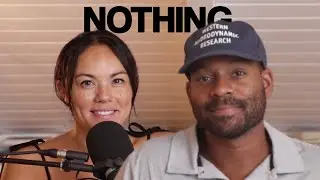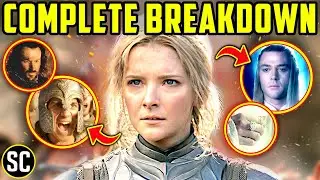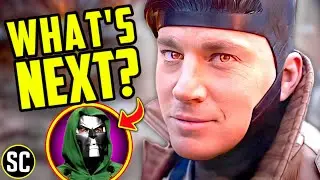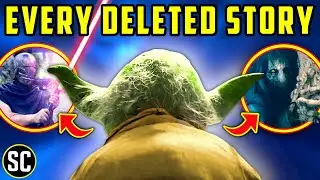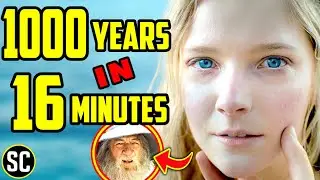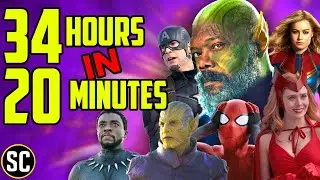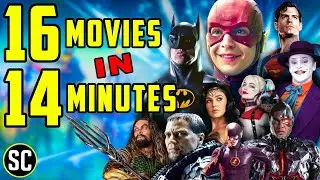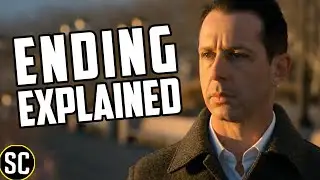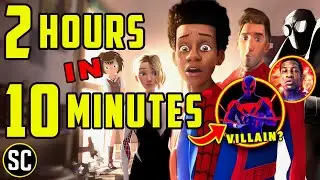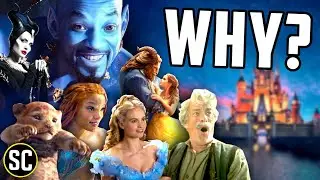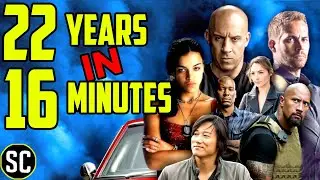Why Disney Can't Let Go of the Past
The age of the Disney Renaissance has become the age of the Disney Remakes. There doesn't seem to be any IP that is safe from the Disney remake machine--but how did we get here? How did an era of innovative films such as Beauty and the Beast, the Little Mermaid, Aladdin, Lion King and more become an era of endless remakes? In this video we break down the history of the Disney Renaissance, and how it became the age of he disney remake.
Thanks for supporting our channel! Check out our MERCH Store Here → https://screencrushmerch.com/
Go here → http://screencrush.com/
TikTok → / screencrushnews
Like us → / screencrush
Follow us → / screencrushnews
Get our newsletter → http://screencrush.com/newsletter/
Written by Bevin / bevinbatspice
Hosted by Ryan Arey ( / ryanarey )
Edited by Randolf Nombrado, Lee Mazzio, and Brianna McLarty
#LittleMermaid #Disney #DisneyRenaissance
While Disney was saving money, they were not pushing the needle forward in artistic innovation. Many animators grew frustrated with the cost-cutting technique finding it creatively stilting. One long-time animator who felt this way was Don Bluth. He left the company during the production of Fox and the Hound to start his own rival studio, Don Bluth Productions, which delayed the film’s release by six months. (clip)
His first feature under his production house was The Secret of NIMH, whose story was initially rejected by Disney for being too dark. During this period, his company would become Disney's main competitor in the animation industry, with their Steven Speilberg-produced American Tail beating out Disney’s The Great Mouse Detective as one key example. Bluth’s departure was a kick in the ass, and Disney needed to regroup.
Recognizing the dire situation, Roy E Disney hired former Paramount Pictures, Michael Eisner as CEO in 1984, and Frank Wells, of Warner Bros. Pictures, as president (clip). Michael additionally brought his Paramount associate Jeffrey Katzenberg on board as studio chairman, whose job would be to oversee the animation department. (clip) The company also recently had a new influx of animators who had joined the company after graduating from CalArts who were itching to pull out their ink brushes. Jeffery, in the beginning, would clash with the animators over (clip) of the animation process; if one could edit the animation, for example. (clip) Nevertheless, the return of Roy E and the arrival of Michael, Frank, and Jeffery would make them the four horsemen, not of the apocalypse–as the animators first thought–but of the Renaissance.
Those interested in learning about the transition period between the Bronze Age and the Renaissance age MUST check on Waking Sleeping Beauty on Disney+. It’s a great watch.
Doug: Why is it called Waking Sleeping Beauty?
You’d have to watch it. But one factor is that the Renaissance marked the return of fairy tales which Disney hadn’t produced in 30 years. The last one being…?
Doug: Sleeping Beauty?
Yes!
Fairy Tales used to be the staple for Disney studios, and the time had come to bring them back around. If fairy tales were returning, so must also the musical formula. Not that Disney hadn’t been utilizing music, they just hadn’t used a book musical script in a while. Musicals help solidify story beats since music can strengthen memory and attention (clip)
This is why The Little Mermaid signals the start of the Renaissance. It was their first fairy tale in 30 years, the first film to bring back the Disney Princess, and the first film to utilize the genius of Howard Ashman and Alan Menken (clip). Howard was instrumental in the musical numbers and the script of the three Disney films he worked on. He would also coach the actors on their performances in the sound booth. Returning to this format helps Disney market its IPs to the public, cementing its characters into the zeitgeist. (clip)
Man, did the profits come rolling in, making over 200 million worldwide and garnering critical acclaim and a higher weekend gross than Don Bluth's All Dogs Go to Heaven, which had to feel great. (clip)The Little Mermaid also earned Ashman and Menken their first of many Oscars. Well, for Menken, that is. Howard Ashman had been diagnosed and would not live to see his work on Beauty and the Beast and Aladdin nor be present when they would win for best song and score for both. It was a devastating loss for the company. (clip)
Alan would go on to be involved with three other Disney Renaissance films, winning 8 out of the total 11 Oscars received by Disney during this decade. Films that underperformed with critics and at the box office, such as Pocahontas and Hunchback, were salvaged by the stellar score and songs provided by Menken and his new collaborator Stephen Schwartz.

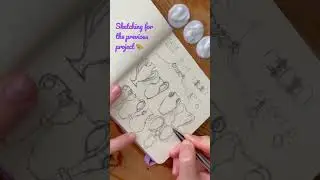

![Rxckson Type Beat (Free FLP?!) [ARVE]](https://images.videosashka.com/watch/fMSuTUajAYg)

